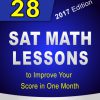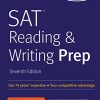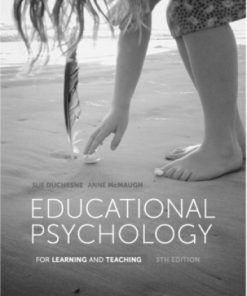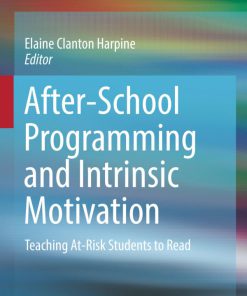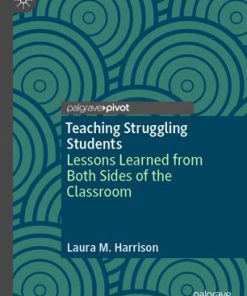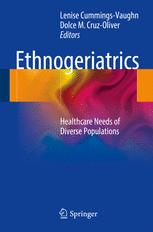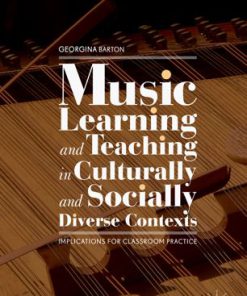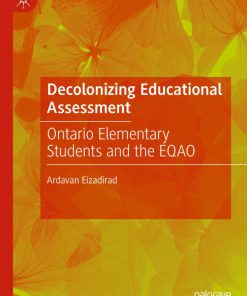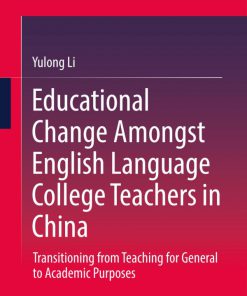Teaching Students Who Are Exceptional Diverse and at Risk in the General Educational Classroom 7th Edition by Sharon Vaughn, Candace Bos, Jeanne Shay Schumm ISBN 9780134447933 013444793X
$50.00 Original price was: $50.00.$25.00Current price is: $25.00.
Teaching Students Who Are Exceptional Diverse and at Risk in the General Educational Classroom 7th Edition by Sharon Vaughn, Candace Bos, Jeanne Shay Schumm – Ebook PDF Instant Download/Delivery: 9780134447933 ,013444793X
Full download Teaching Students Who Are Exceptional Diverse and at Risk in the General Educational Classroom 7th Edition after payment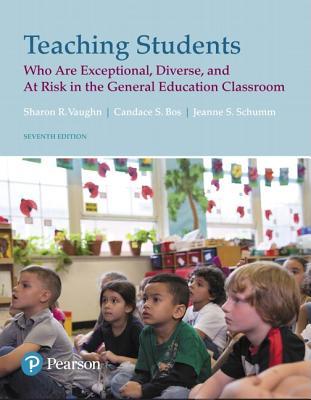
Product details:
ISBN 10: 013444793X
ISBN 13: 9780134447933
Author: Sharon Vaughn, Candace Bos, Jeanne Shay Schumm
Teaching Students Who Are Exceptional Diverse and at Risk in the General Educational Classroom 7th Edition Table of contents:
1 Special Education and Inclusive Schooling
Chapter Outline
Learning Outcomes
Introduction
1.1 Early and Recent Foundations of Special Education
1.1.1 Early Influences
1.1.2 Recent Influences
1.1.3 IDEIA and the Vocational Rehabilitation Act
1.1.4 Provisions and Guidelines for Implementing IDEIA
What do Classroom Teachers and Parents Need to Know about Referral and Identification for Special Education?
1.1.5 Provisions of the Vocational Rehabilitation Act
1.1.6 Continuum of Educational Services: Concept of Least Restrictive Environment
Part-Time Placement in Special Education
Full-Time Placement in Special Education
Special School or Residential Settings
Homebound Instruction
1.1.7 The Individualized Education Program (IEP)
The Role of the IEP for Planning and Assessment
IEP Meeting Attendees
Determining Appropriate Accommodations and Modifications
Student Involvement
Focus on Self-Determination
The IEP Process
1.2 Responsibilities of Classroom Teachers
1.2.1 Participating in the Referral and Planning Process
The Prereferral Process
Response-to-Intervention Model
Consultant Model
Problem-Solving Model
1.2.2 Adapting Instruction
1.3 No Child Left Behind Act, Expanding IDEIA, and Inclusion
1.3.1 Testing Accommodations for Students with Disabilities
1.3.2 Expanding the Impact of the IDEIA
Early Intervention and Transition from Early Childhood to School
Transition from School to Work and other Post-School Activities
Individualized Transition Plan (ITP)
1.3.3 Inclusion
1.3.4 Accessing Information About Students
1.3.5 Inclusion Issues
1 Summary
Think and Apply
2 Response to Intervention and Multitiered Systems of Support: Developing Success for All Learners
Chapter Outline
Learning Outcomes
Introduction
2.1 Past and Present Challenges: The Need for RTI
2.1.1 Previous Identification Procedures
2.1.2 Initiatives Influencing RTI
2.1.3 The Individuals with Disabilities Education Improvement Act (IDEIA 2004)
Response-to-Intervention (RTI) Overview by State
2.2 Components of Response to Intervention
2.2.1 Progress Monitoring within the RTI Framework
2.2.2 Tiers of Intervention: Multitiered Systems of Support (MTSS)
Primary Instruction, Tier 1
Secondary Intervention, Tier 2
Tertiary Intervention, Tier 3
Additional Tiers of Intervention, Tier 4 and Beyond
2.3 Universal Screening and Progress Monitoring
2.3.1 Using Screening to Make Educational Decisions
2.3.2 Using Progress Monitoring to Assess Students’ Response to Interventions
2.3.3 Implementing Interventions
2.3.4 Standard Treatment Protocol
2.3.5 Problem-Solving Model
2.3.6 Differences Between the Standard Protocol and Problem-Solving Models
2.3.7 Decision-Making Teams (Campus or RTI Leadership Teams)
2.4 Special Considerations for Implementing RTI
2.4.1 Responders and Nonresponders to Intervention
Identifying Inadequate Responders
2.4.2 Implementing Interventions
2.4.3 RTI for Students Who Are Culturally and Linguistically Diverse
2.4.4 Working with Families
2.4.5 Role of Teachers in an RTI Model
Collaborating and Consulting
2.4.6 Using RTI Data to Identify Students with Learning Disabilities
Accrue Data During Progress Monitoring
Administer Formal, Informal, and Screening Measures
Possible Psychological Evaluation of Intellectual Ability
Review and Analyze Material
2.4.7 Providing Interventions
2.4.8 Using RTI Models in Middle Schools and High Schools
2 Summary
Think and Apply
3 Communicating and Collaborating with Other Professionals and Families
Chapter Outline
Learning Outcomes
Introduction
3.1 Critical Communication Skills
3.1.1 Acceptance
3.1.2 Listening
3.1.3 Questioning
3.1.4 Staying Focused
3.2 Collaborating with Other Professionals
3.2.1 Collaboration
Research on Collaboration
Resources Needed for Collaboration
3.2.2 Collaboration Models
3.2.3 Consultation
3.2.4 Teaming
3.2.5 Co-Planning
3.2.6 Co-Teaching
3.2.7 Co-Assessment/Co-Grading
3.2.8 Collaborating with Paraeducators
Professional Resources for Paraeducators
Roles Paraeducators can Play to Support You
3.2.9 Collaboration Issues and Dilemmas
Student Ownership
Individual versus Class Focus
Content versus Accommodation
Real World versus Student’s World
3.3 Working with Families
3.3.1 Family Collaboration
Culturally and Linguistically Diverse Families
The Role of Families in the Collaboration Process
3.3.2 Family Adjustment
3.3.3 Homework
3.3.4 Planned and Unplanned Parent Conferences
3.3.5 School-to-Home Communication
3 Summary
Think and Apply
4 Teaching Culturally and Linguistically Diverse Students
Chapter Outline
Learning Outcomes
Introduction
4.1 Diversity in Classrooms
4.1.1 Achievement Disparities
4.1.2 Culturally Responsive Teaching
4.1.3 Understanding Diverse Cultures
4.1.4 Understanding Cultural Characteristics
Cultural Characteristics
Cultural Boundaries
4.2 Multicultural Education
4.2.1 Dimensions of Multicultural Education
4.2.2 Desired Student Outcomes
4.2.3 Multicultural Curricula
Contributions Approach
Additive Approach
Transformation Approach
Social Action Approach
4.3 Linguistic Diversity and Second-Language Acquisition
4.3.1 Programs for Promoting Second-Language Acquisition
4.3.2 Instruction in English as a Second Language
4.3.3 Bilingual Education
4.3.4 Framework for Second-Language Acquisition
Situational Factors
Linguistic Input
Learner Characteristics
4.3.5 The Learning and Developmental Process
4.3.6 Secondary Language Output
4.3.7 Language Variation and Dialect
4.3.8 Historical Perspective on ESL Instruction and Bilingual Education
4.4 Assessment of Students with Cultural and Linguistic Differences
4.5 Instructional Guidelines and Accommodations for Diverse Students
4.5.1 Culturally Responsive Teaching to Accommodate English Language Learners
4.5.2 Best Practices in English Language Learning
Encourage Strategic Use of First Language
Build Vocabulary with First Language as a Foundation
Focus on Meaning
Provide Explicit Skill Instruction
4 Summary
Think and Apply
5 Promoting Social Acceptance and Managing Student Behavior
Chapter Outline
Learning Outcomes
Introduction
5.1 Establishing a Positive Classroom Climate
5.1.1 Arranging the Physical Space
5.1.2 Creating a Respectful Learning Community
5.1.3 Engaging Students Through Class Meetings
5.2 Increasing Social Acceptance of Students with Disabilities
5.2.1 Enhancing Students’ Self-Concepts
5.3 Recognizing and Preventing Bullying
5.4 Understanding Behavior Management in Culturally Diverse Classrooms
5.5 Providing Positive Behavior Intervention Supports Within a RTI Framework
5.5.1 Positive Behavior Intervention Supports as Prevention
5.5.2 Schoolwide Positive Behavior Intervention Supports
5.5.3 Positive Behavior Intervention Supports and Response to Intervention
5.6 Positive Behavior Intervention Supports: Universal Strategies for Managing Student Behavior
5.6.1 Focusing on Positive Behaviors
5.6.2 Using Reinforcers to Encourage Positive Behavior
5.6.3 Establishing Clear Rules with Known Consequences
5.6.4 Helping Students to Change Inappropriate Behavior
Time-out
Punishment
Recognizing Students’ Mistaken Goals
5 Summary
Think and Apply
6 Teaching Students with Learning Disabilities and Attention Deficit Hyperactivity Disorder
Chapter Outline
Learning Outcomes
Introduction
6.1 Learning Disabilities
6.1.1 Definitions of Learning Disabilities
6.2 Characteristics of Students with Learning Disabilities
6.2.1 Types of Learning Disabilities
6.2.2 Lifelong Outcomes for Individuals with Learning Disabilities
6.2.3 Prevalence of Learning Disabilities
6.3 Identification of Students with Learning Disabilities
6.3.1 Discrepancy between IQ and Achievement
6.3.2 Response to Intervention
6.3.3 Teachers’ Role in the Identification Process
6.4 Instructional Techniques and Accommodations for Students with Learning Disabilities
6.4.1 Providing a Framework for Learning
Using Thinking Aloud and Instructional Conversations
Teaching Self-Regulation and Self-Monitoring
Providing Extended Practice and Application
Using Learning Tools and Aids
Adjusting Workload and Time
Presenting Information in Multiple Ways
Teaching Students to Use Memory Strategies
6.5 Attention Deficit Hyperactivity Disorder
6.6 Characteristics of Students with Attention Deficit Hyperactivity Disorder
6.6.1 Teachers’ Roles in Helping Others Understand ADHD
6.6.2 Working with Students Who Have ADHD
6.6.3 Prevalence of Attention Deficit Hyperactivity Disorder
6.7 Identification and Assessment of Students with Attention Deficit Hyperactivity Disorder
6.7.1 Eligibility for ADHD Services and Special Education Law
Ideia
Section 504 of the Rehabilitation Act of 1973
6.8 Instructional Guidelines and Accommodations for Students with Attention Deficit Hyperactivity Disorder
6.8.1 Educational Interventions
6.8.2 Medication as One Aspect of Treatment for ADHD
6.8.3 Teacher’s Role in Monitoring Medication
6 Summary
Think and Apply
7 Teaching Students with Communication Disorders
Chapter Outline
Learning Outcomes
Introduction
7.1 Communication Disorders
7.1.1 Speech Disorders
Speech Sound Disorders
Voice Disorders
Stuttering
School-Age Language and Social Communication Disorders
7.1.2 Language Content
7.1.3 Vocabulary
Word Categories and Word Relationships
Multiple Meanings
Figurative Language
7.1.4 Language Form
Phonology
Morphology
Syntax
Language Use
Metalinguistics
7.1.5 Prevalence of Communication Disorders
7.2 Causes of Communication Disorders
7.3 Identifying Students with Communication Disorders
7.3.1 Observe and Listen to Student Communication
7.3.2 Differentiate Between ELL Learning Curves and Language Disabilities or Disorders
7.4 Instructional Guidelines and Accommodations for Students with Communication Disorders
7.4.1 Facilitating Speech Development
Augmentative and Alternative Communication Systems
Methods for Enhancing Communication
Facilitating Language Development
Teaching Language in Purposive Contexts
Teaching Comprehension and Production
Presenting New Concepts
Demonstrating Connections between Concepts
Using Conversation
Using Wait Time
Adjusting the Pace
Using Self-Talk and Parallel Talk
Using Modeling
Promoting Language through Expansion and Elaboration
Using Language as an Intrinsic Motivator
7.4.2 Using Effective Teaching Strategies for Language Intervention
7.5 Working with Parents to Extend Language Concepts
7 Summary
Think and Apply
8 Teaching Students with Emotional and Behavioral Disorders
Chapter Outline
Learning Outcomes
Introduction
8.1 Understanding Emotional and Behavioral Disorders
8.1.1 The Federal Government’s Definition of Emotional and Behavioral Disorders
8.1.2 An Alternative Definition of Emotional and Behavioral Disorders
8.1.3 Prevalence of Students with Emotional or Behavioral Disorders
8.1.4 Types and Characteristics of Emotional or Behavioral Disorders
8.1.5 The Diagnostic and Statistical Manual of Mental Disorders
Anxiety
Mood Disorders
Defiance
8.1.6 Conduct and Aggression
8.1.7 Socialized Aggression
8.1.8 Schizophrenia
8.2 Causes of Emotional and Behavioral Disorders
8.2.1 Biological Causes
8.2.2 Environmental Causes
Home Conditions
Community Conditions
8.3 Identification and Assessment of Students with Emotional and Behavioral Disorders
8.3.1 Initial Identification
8.3.2 Response to Intervention for Students with Emotional and Behavioral Disorders
8.3.3 Universal Screening and Progress Monitoring
8.3.4 Developing a Functional Behavioral Assessment
Using the FBA assessment
8.4 Effective Teaching Practices for Students with Emotional or Behavioral Disorders
8.4.1 Guidelines and Accommodations for Students with Emotional or Behavioral Disorders
8.4.2 Changing Behavior
Good Behavior Game
8.4.3 Resolving Conflicts and Promoting Self-Control
8.4.4 Teaching Self-Monitoring Skills
8.4.5 Teaching Self-Management Skills
8.4.6 Teaching Social Skills
8.4.7 Using Social Learning Strategies
8.4.8 Implementing School-Based Wraparound
8.4.9 Adapting Instruction
8 Summary
Think and Apply
9 Teaching Students with Autism Spectrum Disorders/Pervasive Developmental Disorders
Chapter Outline
Learning Outcomes
Contributors to this Chapter
Introduction
9.1 Definitions and Characteristics of Autism Spectrum Disorders/Asperger Syndrome and Pervasive Developmental Disorders
9.1.1 Autism
9.1.2 Asperger Syndrome
9.1.3 Rett Syndrome
9.1.4 Childhood Disintegrative Disorder
9.1.5 Pervasive Developmental Disorder–Not Otherwise Specified
9.1.6 Characteristics of Students with ASD
9.1.7 Social Skills
9.1.8 Communication Skills
9.1.9 Repetitive Behaviors and Routines
9.2 Identification and Assessment of Students with Autism Spectrum Disorders
9.3 Curricular and Instructional Guidelines for Students with Autism Spectrum Disorders
9.3.1 Assess Preferences
9.3.2 Establish a Classroom Routine
9.3.3 Teach Academic Skills
9.3.4 Teach Communication Skills
Massed Trials Strategy
Milieu or Naturalistic Instruction
Augmentative and Alternative Communication (aac)
9.3.5 Teach Social Skills
Social Problem Solving
9.3.6 Social Story Interventions
Selecting Social Skills for Intervention
9.4 Addressing Challenging Behaviors
9.4.1 Using Functional Behavioral Assessment (FBA)
Indirect Assessments
Direct Assessments
Functional Analysis
9.4.2 Using Positive Behavioral Support
9 Summary
Think and Apply
10 Teaching Students with Intellectual and Developmental Disabilities
Chapter Outline
Learning Outcomes
Introduction
10.1 Understanding Intellectual and Developmental Disabilities
10.1.1 Definition of Intellectual and Developmental Disabilities
Developmental Disabilities
Intellectual Disabilities
10.1.2 Characteristics of Students with Intellectual Disabilities
Intellectual Characteristics
Social and Behavioral Characteristics
Prevalence
10.2 Causes of Intellectual Disabilities
10.2.1 Chromosomal Disorders
Fragile X Syndrome
Fetal Alcohol Spectrum Disorders
10.2.2 Other Causes of Intellectual Disabilities
10.2.3 Comorbidity
10.3 Identification of Students with Intellectual Disabilities
10.3.1 Intellectual Functioning
10.3.2 Adaptive Behavior
10.3.3 Systems of Support
10.3.4 Levels of Severity
10.3.5 Teacher’s Role in Identifying Students with Intellectual and Developmental Disabilities
10.4 Instructional Techniques and Accommodations for Students with Intellectual Disabilities
10.4.1 Role of the General Education Teacher
10.4.2 Planning
Person-Centered Planning
The McGill Action Planning System (MAPS)
Functional Assessment, Discrepancy Analysis, and Task Analysis
10.4.3 Assessment
Authentic Assessment
Alternate Assessment
10.4.4 Curriculum Adaptations
Multilevel Curriculum
Curriculum Overlapping
10.4.5 Instructional Practices
Systematic Instruction
Hands-On Instruction
10.4.6 Strategies to Support Students in the General Education Classroom
Increasing a Student’s Sense of Belonging
Partial Participation
Using Routines to Ensure Safety
Peer Support and Peer Tutoring
Cooperative Learning
10.4.7 Providing Opportunities for Functional Practice
10.4.8 Encouraging Family Involvement
10 Summary
Think and Apply
11 Teaching Students with Lower-Incidence Disabilities
Chapter Outline
Learning Outcomes
Introduction
11.1 Students with Visual Impairments
11.1.1 Definitions and Types of Visual Impairments
Legal Definitions
Educational Definition
Causes of Visual Impairment
11.1.2 Characteristics of Students with Visual Impairments
11.1.3 Prevalence of Students with Visual Impairments
11.1.4 Identification and Assessment of Students with Visual Impairments
11.1.5 Instructional Guidelines and Accommodations for Students with Visual Impairments
General Accommodations
Using Braille Devices
Using Orientation and Mobility Skills
Using Optical, Nonoptical, and Instructional Aids
Testing Accommodations
11.2 Students with Hearing Loss
11.2.1 Definitions and Types of Hearing Loss
11.2.2 Characteristics of Students with Hearing Loss
11.2.3 Prevalence of Students with Hearing Loss
11.2.4 Identification and Assessment of Students with Hearing Loss
11.2.5 Instructional Guidelines and Accommodations for Students with Hearing Loss
Using amplification
Making Classroom Accommodations
Using Assistive Technology
Using Interpreters and Note Takers
11.3 Students with Physical Disabilities, Health Impairments, and Traumatic Brain Injury
11.3.1 Definitions and Types of Physical Disabilities, Health Impairments, and Traumatic Brain Injury
11.3.2 Characteristics of Students with Physical Disabilities, Health Impairments, and Traumatic Brain Injury
Asthma
Cerebral Palsy
Spina Bifida
Epilepsy
Muscular Dystrophy
HIV and AIDS
Traumatic Brain Injury
11.3.3 Prevalence of Students with Physical Disabilities, Health Impairments, and Traumatic Brain Injury
11.3.4 Identification and Assessment of Students with Physical Disabilities, Health Impairments, and Traumatic Brain Injury
11.3.5 Instructional Guidelines and Accommodations for Students with Physical Disabilities, Health Impairments, and Traumatic Brain Injury
Making Environmental Modifications
Providing Instruction for Motor Skills
Promoting Literacy Development
Educating Classmates
Dealing with Chronic Illness and Death
11.4 Students with Multiple or Dual Sensory Disabilities
11.4.1 Definitions of Multiple and Dual Sensory Disabilities
11.4.2 Characteristics of Students with Multiple or Dual Sensory Disabilities
11.4.3 Prevalence of Students with Multiple and Dual Sensory Disabilities
11.4.4 Instructional Guidelines and Accommodations for Students with Multiple and Dual Sensory Disabilities
Using Assistive Technology
11 Summary
Think and Apply
12 Differentiating Instruction and Assessment for All Learners
Chapter Outline
Learning Outcomes
Introduction
12.1 Standards-Based Instruction
12.1.1 The Release of the Common Core State Standards
Potential Benefits of the Standards
Potential Drawbacks to the Standards
12.1.2 Implementation of the Common Core State Standards
12.2 Differentiating Instruction
12.2.1 What Is Differentiated Instruction?
12.2.2 Components of Differentiated Instruction
12.2.3 Differentiated Instructing Using Flexible Grouping
12.2.4 Using Learning Stations to Differentiate Instruction
12.2.5 How Can I Differentiate Assignments and Homework?
12.2.6 How Can I Plan for Differentiated Instruction?
12.2.7 How Can I Accommodate Students Who Are Gifted and Talented?
Characteristics of Students who are Gifted and Talented
Underidentified High-Achieving Students
Curriculum Compacting
Parallel Curriculum Model
Best Instructional Practice
How does Differentiated Instruction Relate to Response to Intervention?
12.3 Differentiating Reading Assignments
12.3.1 Familiarizing Yourself with the Texts
Readability Level
Friendliness Level
12.3.2 Understanding How Students Interact with and Respond to Text
12.3.3 Making Adaptations
12.3.4 Comprehension Canopy
Text Highlighting
Multiple Sources
Listening to Learn
12.4 Differentiating Assessment
12.4.1 Preparing Students for High-Stakes Tests
12.4.2 Helping Students Develop Test-Taking Strategies
Teacher-Made Tests
Alternative Assessments
12.4.3 Grading
12 Summary
Think and Apply
13 Promoting Content Learning Through the Teaching and Learning Connection
Chapter Outline
Learning Outcomes
Introduction
13.1 Preparing Lessons that Promote Engagement
13.1.1 Getting Ready to Support Learning
Purpose Setting
Preteaching Vocabulary
13.1.2 Creating Listener-Friendly Lectures
Teacher’s Verbal Knowledge
13.1.3 Enhancing Lectures with Demonstrations
13.1.4 Fostering Listening and Taking Notes in Class
Guidelines for Effective Note-Taking
Teaching Note-Taking
13.2 Using Questioning and Discussion to Promote Student Engagement
13.2.1 Encouraging Participation in Class
13.2.2 Questioning
13.2.3 Generating Classroom Discussions
13.3 Using Graphic Organizers
13.3.1 Discussion Webs
13.3.2 Semantic Maps
13.3.3 Concept Diagrams
13.3.4 Timelines
13.4 Promoting Student Success with Clear Assignments and Teaching of Organizational Skills
13.4.1 Giving Assignments That Promote Student Success
13.4.2 Developing Independence in Completing Assignments
Getting Organized for Learning
Using Time-Management Strategies
Using Direct Instruction for Daily Assignments
Organizing and Planning for Long-Term Assignments
13.5 Effective Strategy Instruction
13.5.1 The Goals of Strategy Instruction
Guideline 1: Choose Strategies Carefully
Guideline 2: Present Content and Strategies Concurrently
Guideline 3: Teach Strategies in Stages
13.5.2 Tools of Strategy Instruction
13.5.3 Memory Strategies
Mnemonics
13.5.4 A Strategy for Self-Monitoring
13.5.5 Strategies for Self-Advocacy
13 Summary
Think and Apply
14 Facilitating Reading
Chapter Outline
Learning Outcomes
Introduction
14.1 Reading Instruction
14.1.1 Three Key Concepts Underlying Reading Instruction
14.1.2 Components of Reading Instruction
14.1.3 Learning Difficulties in the Process of Reading
14.1.4 Standards-based Instruction
14.1.5 Collaborating with Other Professionals
14.2 Effective Reading Instruction for Struggling Readers
14.2.1 Establishing an Environment to Promote Reading
14.2.2 Assessment
14.2.3 Screening
14.2.4 Diagnosis
14.2.5 Progress Monitoring
14.2.6 Using Data from Progress Monitoring
14.2.7 Assessments Used for Accountability
The Teacher’s Role in Preparing Students for Assessment
The Every Student Succeeds Act (ESSA)
14.2.8 Providing Early Intervention and Intensive Instruction
14.2.9 Providing Ongoing Support for Older Readers with Reading Difficulties
14.2.10 Providing Support for English Language Learners
14.3 Strategies for Teaching Phonological Awareness and Phonics
14.3.1 Teaching Phonological Awareness
14.3.2 Teaching Phonics
14.4 Strategies for Teaching Word Identification
14.4.1 Teaching Sight Words
14.4.2 Teaching Decoding Strategies
14.4.3 Phonic Analysis
14.4.4 Onset-Rime
14.4.5 Morphological Awareness
14.4.6 Syntax and Semantics
14.4.7 Techniques for Teaching Decoding and Sight Words
Making Words, Word Sorting, and Using Word Walls
Using the DISSECT strategy
14.5 Strategies for Helping Students Develop Fluency
14.5.1 Using Response to Intervention (RTI) to Promote Fluency
14.5.2 Reading Aloud
14.5.3 Repeated Reading
14.5.4 Research Findings on Repeated Reading
Instructional Guidelines for Using Repeated Reading
14.5.5 Peer Tutoring
14.6 Strategies for Improving Reading Comprehension
14.6.1 Close Reading of Text
14.6.2 Vocabulary Knowledge
K-W-L strategy
14.6.3 Question—Answer Relationships Strategy
14.6.4 Questioning the Author
14.6.5 Collaborative Strategic Reading
Cooperative Learning Groups
14 Summary
Think and Apply
15 Facilitating Writing
Chapter Outline
Learning Outcomes
Introduction
15.1 Current Trends in Writing Curricula and Instruction
15.1.1 Common Core Standards–Based Writing Instruction and Research-Based Practices
15.1.2 Emphasis on Assessment and Progress Monitoring
15.1.3 Progress Monitoring and Writing
Using Observations for Progress Monitoring
Using Portfolios for Progress Monitoring
Using Words Written Per Minute and Rating Scales to Monitor Students’ Progress
Very Beginning Writers
Beginning Writers
Writers
Advanced Writers
15.1.4 Response to Intervention and Writing
15.1.5 Writing Rubrics and Portfolios
Writing Rubrics
Writing Portfolios
15.2 Teaching Writing as a Process
15.2.1 Writing as an Interactive Process
15.2.2 Writing as a Strategic Process
15.2.3 Writing as a Process of Constructing Meaning
15.2.4 Writing as a Student-Centered Process
15.2.5 Writing as a Socially Mediated Language-Learning Activity
15.3 Strategies for Establishing an Environment That Promotes Writing
15.3.1 Physical Environment
15.3.2 Strategies for Conducting a Writing Workshop
15.4 Making Adaptations for Struggling Writers: Teachers’ Practices
15.4.1 Prewriting: Getting Started
15.4.2 Selecting Topics
15.4.3 Problems in Topic Selection
15.4.4 Planning
15.4.5 Composing
15.4.6 Editing
15.4.7 Revising
Peer Editing
15.4.8 Publishing
15.4.9 Sharing
Setting Rules for Sharing
15.4.10 Conferencing
Teaching Writing Skills
15.5 Strategies for Teaching Narrative, Expository, and Opinion/Argument Writing
15.5.1 Narrative Writing
Using Story Webs to Plan
15.5.2 Expository Writing
15.5.3 Paragraph Writing
15.5.4 Essay Writing
15.5.5 Opinion/Argument Writing
15.6 Teaching Spelling Skills
15.6.1 Approaches to Spelling Instruction
15.6.2 Spelling Instruction for Students with Learning Difficulties and Disabilities
Selecting Words
Providing Instruction and Practice
Monitoring Student Progress
15.6.3 Principles of Effective Spelling Instruction
Teaching Spelling Patterns
Teaching in Small Units
Providing Sufficient Practice and Feedback
Selecting Appropriate Words
Maintaining Previously Learned Words
Teaching for Transfer of Learning
Motivating Students to Spell Correctly
Including Dictionary Training
15.7 Teaching Handwriting and Keyboarding Skills
15.7.1 Trends in Handwriting Instruction
15.7.2 Students with Difficulty in Handwriting
15.7.3 Principles of Effective Handwriting Instruction
Legibility
15.7.4 Fluency
Monitoring Student Progress
15.7.5 Principles of Effective Keyboarding Instruction
15 Summary
Think and Apply
16 Helping All Students Succeed in Mathematics
Chapter Outline
Learning Outcomes
Introduction
16.1 Current Trends in Mathematics Curriculum and Instruction
16.1.1 Influences on Math Instruction
The History of the National Council of Teachers of Mathematics (NCTM)
NCTM’s involvement in the Common Core State Standards
NCTM’s Response to Lingering Challenges in Mathematics Instruction
16.1.2 Mathematical Problem Solving
16.1.3 Math Proficiency
16.2 Difficulties in Learning Mathematics
16.2.1 Developmental Arithmetic Disorder
16.2.2 Nonverbal Math Difficulties
16.2.3 Math Difficulties and Effective Instruction
16.2.4 Mathematics Learning for Linguistically and Culturally Diverse Learners
16.2.5 Teaching Students Who Are Mathematically Gifted
16.3 Assessment and Progress Monitoring
16.3.1 Implementing Assessment and Progress Monitoring
16.3.2 Diagnosing Students’ Learning Needs in Mathematics
16.3.3 Using Response to Intervention: Identifying Students Who Need Help in Math
16.3.4 Curriculum-Based Measurement
16.3.5 Assessing Students’ Number Sense
16.4 Helping Students Improve in Math
16.4.1 Being a Model in Math
16.4.2 Evaluating the Mathematics Curricula
16.4.3 Using Curricular Programs for Students with Math Difficulties
16.4.4 Using Peers to Support Instructional Practice
16.4.5 Using Teaching Tools and Methods for Improvement
Teaching with Math Manipulatives
16.4.6 Teaching for Comprehension
Checking for Comprehension
The Case of Trinette
16.4.7 Using Constant Time-Delay Procedure
16.4.8 Providing Correction and Feedback
16.4.9 Providing Practice
Counting by Numbers
Games
16.4.10 Adapting Instruction for Secondary Students with Math Difficulties
16.5 Strategies for Helping All Students Acquire Basic Math Skills
16.5.1 Prenumber Skills
One-to-One Correspondence
Classification
Seriation
Patterning
16.5.2 Working with Numeration
Estimating
Understanding Regrouping
Understanding Zero
16.5.3 Understanding Place Value
Grouping by Ones and Tens
Naming Tens
Place Value Beyond Two Digits
16.5.4 Learning Fractions
16.6 Strategies for Helping All Learners Acquire and Use Computation Skills
16.6.1 Patterns of Common Computation Errors
Spatial organization
Visual Detail
Procedural Error
Failure to Shift Operations
Motoric Problems
Memory Problems
Difficulty with Zero
16.6.2 Computation and Calculators
16.7 Strategies for Helping All Students Develop Problem-Solving Skills
16.7.1 Teaching Problem-Solving Strategies
16.7.2 Integrating Math Problem Solving into the Curriculum
16 Summary
Think and Apply
Appendix CEC Standards
Glossary
References
Name Index
People also search for Teaching Students Who Are Exceptional Diverse and at Risk in the General Educational Classroom 7th Edition:
the ethics of joy spinoza on the empowered life
why is spinoza important
spinoza emendation of the intellect
spirit empowered life
Tags:
Sharon Vaughn,Candace Bos,Jeanne Shay Schumm,Teaching Students,Exceptional Diverse,Risk,Educational
You may also like…
Psychology - Cognitive Psychology
Politics & Philosophy - Social Sciences
Education Studies & Teaching - School Education & Teaching
Teaching Struggling Students Lessons Learned from Both Sides of the Classroom Laura M. Harrison
Fiction
Teaching Literature: Text and Dialogue in the English Classroom 1st Edition Ben Knights (Eds.)
Medicine
Ethnogeriatrics: Healthcare Needs of Diverse Populations 1st Edition Lenise Cummings-Vaughn
Uncategorized
Politics & Philosophy
Education Studies & Teaching


